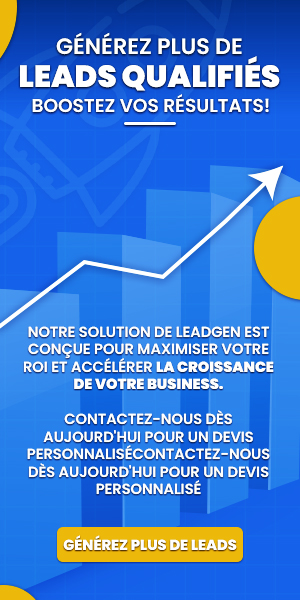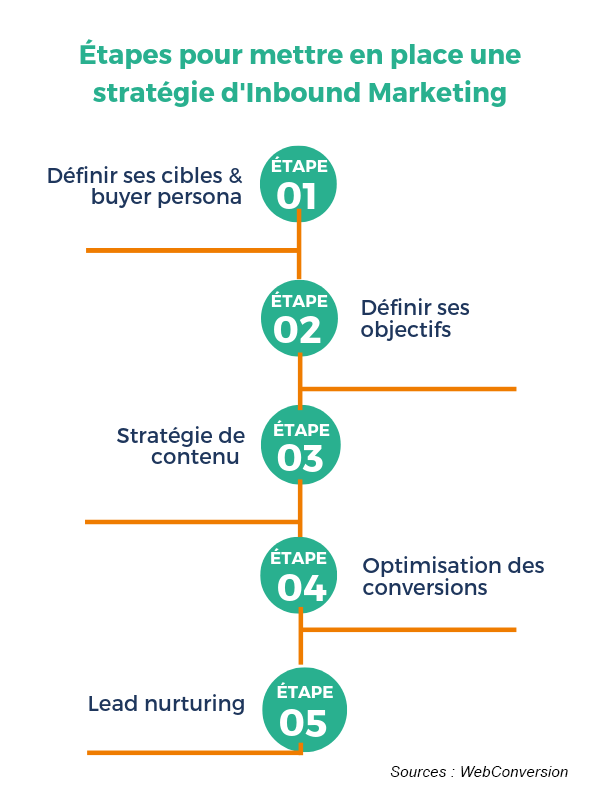Lead qualification is a crucial step in the sales process, determining the relevance and potential of a prospect to convert into a customer. Effective qualification goes beyond simple demographic criteria to assess prospects’ real interest and purchasing intent. It involves an in-depth understanding of the needs, behaviors and motivations of the targeted people. This requires a rigorous methodology and suitable tools to filter leads, optimize interactions and, ultimately, maximize conversion rates. Diving into the key elements that make this qualification effective allows you to significantly improve the performance of sales teams and achieve tangible results.
Table des matières
ToggleThe criteria for a successful lead qualification

There lead qualification is an essential process in a prospect’s buying journey. For it to be truly effective, several criteria must be considered.
First, it is crucial to define criteria for precise qualification. These can include aspects like:
- Budget available for the project
- Need identified by the prospect
- Authority decision-making in the organization
- Time planned for implementation
Then, the ideal customer profile must be defined. This makes it possible to effectively target prospects with a high probability of conversion. Take into account elements such as:
- sector of activity
- company size
- geographical location
Good monitoring of lead lifecycle is also essential. Regularly assessing prospect behavior, such as their interactions with content or engagement on social media, helps qualify leads more easily. Using analytics tools can greatly simplify this task.
Finally, it is essential to guarantee the lead quality generated. This involves rigorous checks, such as ensuring that the information provided is accurate and that prospects meet the qualification criteria. This verification can be done via software specialized in lead scoring.
Finally, ongoing training for sales and marketing teams on best practices lead qualification guarantees constant improvement of results. Regular sessions, workshops and webinars promote a culture of optimization within the organization.
Understanding of customer needs
A lead qualification effective is based on several key criteria. It’s not just about collecting information, but going beyond to understand what really motivates the prospect.
The first step is to understand customer needs. This means taking a listening-centric approach to identify the prospect’s specific challenges and needs. Here are some key points to consider:
- Identify specific pain points: What problems is the customer trying to solve?
- Evaluate the objectives: What are the results expected by the prospect?
- Analyze the context: What is the industry and how does that influence their decision?
A good knowledge of the customer’s needs allows the offer to be adapted accordingly. This also helps to create a bond of trust, essential to facilitate the lead conversion.
Communication plays a crucial role in lead qualification. Establishing an open dialogue where the prospect feels comfortable expressing their concerns is fundamental. Active listening and relevant feedback strengthen this communication.
Finally, a tool for interaction tracking is essential for maintaining an overview of the discussions. This allows you to better understand changing needs and adjust the qualification strategy in real time.
Evaluating conversion potential
Lead qualification is an essential process for optimizing sales efforts and improving conversion rates. A successful lead qualification is based on several criteria which allow their potential to be assessed.
Criteria for successful lead qualification include:
- Need identified : A lead must show a clear need for the product or service offered.
- Budget : It is crucial to assess whether the prospect has sufficient financial resources to make a purchase.
- Decision authority : Identify if the person in contact is a decision-maker or can influence the purchasing decision.
- Temporality : Understand the lead’s purchasing timeline to adjust follow-up strategies.
An assessment of conversion potential is a key aspect of this process. The elements to consider during this evaluation are:
- Engagement History : Analyzing the lead’s past interactions with the brand helps determine their interest.
- Online behavior : Tracking prospect actions, such as site visits and email responses, helps gauge actual interest.
- Direct feedback : Listening to the lead’s needs and concerns can provide valuable insight into their position.
By using these criteria and evaluation methods, teams can improve the lead qualification, optimize their marketing efforts and ultimately increase the number of qualified leads.
Tools and techniques to improve lead qualification
Master lead qualification! 🧲
— John Plumstead (@johnplumstead) July 11, 2024
Turn visitors into qualified leads:
Profile ideal clients.
Assign engagement points.
Use BANT framework.
Adapt and focus on ideal leads! 😉 Nurture unqualified leads—they could be future customers.
📞 Book a call for a strategy!
So that the lead qualification is truly effective, it is essential to put in place tools and techniques adapted. This ensures that each lead identified has high conversion potential. Here are some key things to consider.
CRM tools: The use of customer relationship management software (CRM) allows you to track lead interactions with your brand. These tools collect valuable data that helps gauge the level of interest and engagement of prospects.
Lead scoring: The implementation of a scoring system for leads can help prioritize the most promising prospects. For example, assigning points based on criteria such as online behavior, demographic information or past interactions contributes to better lead management.
Data Analysis: Data collection and analysis are crucial to optimize the qualification process. The analysis of performance indicators (KPI) will help identify the most effective lead sources and adjust your marketing strategies accordingly.
Feedback from the sales team: Collaborate closely with the sales team on the characteristics of qualified leads allows you to refine the qualification process. Organizing regular meetings to discuss feedback can help adjust qualification criteria.
Process automation: Set up automations for lead capture and qualification reduces the risk of human errors and speeds up response time. Chatbots, for example, can engage in initial conversations with prospects and gather relevant information.
Continuing training: Provide training to your team on best practices in terms of lead qualification is a key investment. This will help team members stay informed of developments and adapt quickly.
Adopting these tools and techniques can transform the lead qualification process, increasing the chances of conversion and supporting business growth initiatives.
Use of CRM and automation systems
There lead qualification is a crucial step in the sales process. Effective management of this step not only helps identify prospects with high potential, but also maximizes the chances of conversion. To improve this qualification, companies must rely on tools and techniques adapted.
THE CRM (Customer Relationship Management) play a central role in lead qualification. These systems make it possible to centralize prospect data, thus facilitating the analysis and prioritization of prospects. With better visibility into past interactions and lead behaviors, teams can perform much more personalized and relevant follow-ups.
THE automation systems contribute to the qualification of leads by optimizing the processes of prospecting and reducing the time spent on repetitive tasks. They make it possible to automate actions such as sending reminder emails or scheduling appointments, which results in better response time to prospects.
- Behavior tracking : Monitor lead engagement on different channels (websites, social networks, emails).
- Lead score : Apply scoring to leads based on their behavior and demographics.
- Personalization of communications : Adapt messages according to the interests and actions of leads.
By integrating these tools and techniques into the lead qualification process, businesses can not only identify the most promising prospects, but also optimize the sales experience for each lead. The combination of accurate data and automated solutions creates an efficient and results-oriented approach.
Data analysis for precise targeting
There lead qualification is a crucial issue for sales teams. Effective qualification not only maximizes sales potential, but also optimizes marketing efforts. prospecting. To achieve this, it is essential to integrate the right tools and techniques into the process.
The technologies of CRM play a fundamental role in improving qualifications. They allow interactions with leads to be recorded and analyzed. By using a customer relationship management system, one can collect relevant data on prospect behavior, which helps to better understand their needs and refine targeting.
To go further, methods such as lead scoring are essential. This technique consists of assigning a score to each lead based on predefined criteria, such as engagement, demographic profile or even purchase history. This makes it easier to prioritize the most promising leads.
THE marketing automation is also a major asset. Automating certain interactions allows you to continually engage leads while collecting data on their behavior in real time. This information can be analyzed to adapt marketing messages and optimize the customer journey.
L’data analysis is an essential process for precise targeting. Here are some points to consider:
- Leverage available lead data – such as interaction history and demographic information.
- Use toolsanalytical to identify lead behavior patterns.
- Segment leads into multiple categories based on their engagement level.
By applying these techniques and integrating the appropriate tools, lead qualification becomes a more fluid and efficient process, thus improving the conversion rate and accelerating sales growth. qualified leads.














